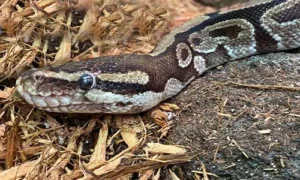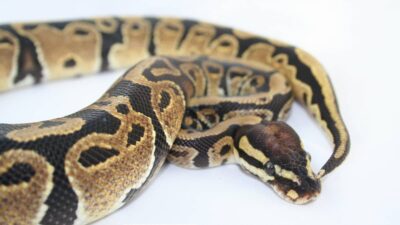When is breeding season for ball pythons? This question echoes through the minds of many reptile enthusiasts eager to embark on the journey of breeding ball pythons. Understanding the intricacies of their reproductive cycle is crucial for successful breeding endeavors.
Breeding season for ball pythons typically occurs during the cooler months, usually from November to March in their natural habitat of West Africa. However, in captivity, breeding can be stimulated through controlled environmental conditions, such as temperature and humidity adjustments.
Many breeders replicate these conditions to trigger breeding behavior in ball pythons year-round, allowing for flexibility in breeding schedules. Additionally, factors like age, health, and individual genetics can influence breeding readiness in ball pythons.
Thus, while there is a general breeding season, captive ball pythons can potentially breed throughout the year with proper care and environmental management.
When is breeding season for ball pythons?

Breeding season for ball pythons typically occurs during the cooler months of the year, generally from November to March. This timeframe coincides with the natural seasonal changes in temperature and photoperiod in their native habitat of West and Central Africa.
During the breeding season, male ball pythons become more active and may display behaviors such as increased roaming and seeking out female pheromones. Female ball pythons also become more receptive to mating during this time.
Breeding in captivity often involves replicating these natural environmental cues. Breeders may gradually lower temperatures and adjust the photoperiod to simulate the onset of winter, triggering reproductive behaviors in their snakes. Additionally, providing appropriate hiding spots and opportunities for social interaction between males and females can encourage mating.
Once successfully bred, female ball pythons typically undergo a gestation period of around 30 to 60 days before laying eggs or giving birth to live young, depending on the specific breeding conditions and genetics of the individual snakes.
Factors Influencing Breeding Readiness
Breeding readiness in animals is influenced by a combination of internal and external factors, which can vary depending on the species. Here are some key factors that influence breeding readiness:
- Seasonal Cues: Many animals, especially those in temperate climates, have breeding seasons triggered by environmental cues such as changes in daylight length, temperature, and food availability. These cues help animals synchronize their reproductive cycles with optimal conditions for offspring survival.
- Hormonal Changes: Hormonal fluctuations play a crucial role in regulating reproductive behavior and physiology. In females, hormones like estrogen and progesterone control the estrous cycle, while in males, testosterone levels influence sexual behavior and sperm production.
- Social Dynamics: Social interactions within a species can affect breeding readiness. Dominance hierarchies, mating rituals, and courtship behaviors all play a role in signaling readiness to breed and attracting potential mates.
- Health and Nutritional Status: Animals must be in good health and have access to adequate nutrition to support reproduction. Poor health or nutritional deficiencies can suppress reproductive hormones and delay breeding readiness.
- Age and Development: Breeding readiness often correlates with sexual maturity, which varies among species and individuals. Factors such as age, size, and developmental stage can influence the onset of sexual maturity and the ability to successfully reproduce.
- Environmental Factors: Habitat quality, availability of suitable nesting sites, and presence of predators or competitors can all impact breeding readiness. Animals may delay breeding if environmental conditions are unfavorable or if resources are scarce.
- Previous Reproductive Success: Past reproductive experiences can influence breeding readiness. Animals that have successfully reproduced in the past may be more likely to breed again, while those that have experienced failure or loss may delay breeding until conditions improve.
- Genetic Factors: Genetic variation within a population can influence breeding readiness and reproductive success. Some individuals may possess genetic traits that make them more or less likely to breed under certain conditions.
Overall, breeding readiness is a complex interplay of genetic, physiological, social, and environmental factors, each of which contributes to the timing and success of reproduction in animals.


